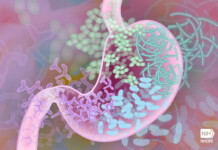By Breanne Nalder-Harward and Dave Nalder-Harward, PLAN7 Endurance Coaching — Endurance sport breeds some of the best types of athletes. Hours and hours, day after day, in extreme conditions, and all of the other things that go in to training and racing lead to fitness that most people in our society don’t even comprehend. With all of that also come consequences. We train our muscles and cardiovascular systems to their limits, and in doing so our hearts essentially develop overuse injury. The purpose of this article is to shine light on what can happen to our hearts, even when we are being healthy, and how proper training and nutrition can help prevent long term complications that can accumulate after years and years of endurance sport.
This topic is especially close to us. Breanne has dedicated her career as a dietitian to help athletes determine their nutrition needs in order to prevent long term problems that occur in the body, such as female athlete triad — eating disorders coupled with bone mineral density loss and amenorrhea in cyclists. She actually has osteopenia and multiple hormone problems that resulted from years of intense training and poor fueling. Dave, on the other hand, was living with Atrial Fibrillation (AFib) for who knows how many years before he was diagnosed and underwent an ablation to correct the damage that had been done to his heart tissue due to years of abuse to his cardio system. Essentially, he had an overuse injury to his heart tissue. The point of telling you our stories is to show that all of the training can add up, so we must take care of ourselves every day to maintain a happy, healthy heart.
On the nutrition side of things, some things to consider include eating foods high in omega 3s, consuming plenty of carbohydrates before and during training, staying hydrated (which includes electrolytes), recovering after every workout, and getting your essential supplements. Let’s break those topics down:
- Omega 3 Fatty Acids: healthy fats from Extra Virgin Olive Oil (EVOO), avocados, salmon, almonds, seeds (chia, flax, hemp) and other plant sources are essential, as they act as lubricant for every cell in our body. They are nature’s anti-inflammatory agents, and they keep our HDL levels high and LDL level low (what we want!) when these foods are chosen over saturated fatty foods.
- Carbs: our main energy source, they are not the enemy! We need 30-60 g per hour on the bike in order to keep our muscles firing and our brain functioning.
- Hydration: seems like a no-brainer, but we need 2 bottles per hour, at least one of those bottles containing a high level of electrolytes (1st Endurance EFS is our favorite).
- Recovery: you have a 30 minute time window to get recovery into your system so you can get your muscle tissue (including your heart tissue) repairing and be ready to train again tomorrow. [Contact Breanne for specific recommendations and help with planning your recovery nutrition.]
- Supplements: the mains ones to focus on for heart health are Calcium, Magnesium, and vitamin D, as well as omega 3s if you don’t eat enough of the foods listed above. A fish oil and/or flax/chia/hemp seed oil supplement can be a great way to up the intake of those important fats.
On the physical side of this equation, please consider your overall workload. Keeping yourself healthy is much more than hammering away at your training. You need to recover as hard, if not harder, than your most challenging training sessions. Overuse is real and you will acquire injuries. Those injuries can be simple and course can be reversed with some rest and recovery. However, there are plenty of ways you can abuse your body through overuse and see some dramatic and catastrophic results.
Training with joint pain can cause overuse injuries. Pay close attention to all the major joints you would think of like knees, ankles, hips and shoulders. I’m also talking about your back and neck. Overtraining/overuse can result in your body making compensations that for the moment seem solid yet over time can create some serious issues like disc compression, IT Band Syndrome, knee and hip misalignment injuries and plenty of others.
Your heart can also be overused. If you pay attention to the cycling media outlets you’ll definitely find discussion about heart arrhythmias. Your heart is a muscle and you can take things too far, even with a super healthy heart. The idea of exercising as a benefit is a great one to follow. However, you need to pay attention to warning signs just as you would with a sore hip, knee or back. Take your resting heart rate every morning. If you have multiple days of your resting HR 10-15% above your baseline resting HR it’s time for a day off or at most some Active Recovery. Active Recovery is super easy effort. Imagine pedaling your bike with an 8 year old. Small chainring only. Minimal hills.
The best ways to avoid overtraining and overuse are to pay attention to your fatigue levels. Following a periodized training plan you definitely want to put yourself into a fatigued state to coax your body into physiological adaptations to make it more efficient. A big part of that is allowing for recovery. Err on the side of recovering more. Over-fatigue can derail a season and possibly the following season in a blink of the eye if you’re not following a solid recovery schedule. Take some easy days, take some days off. Assess your fatigue. Tell your coach you are tired. Have a discussion about it. Be objective when you don’t feel well. Missing a day of training when you are worked over will only help you come out stronger.
Breanne Nalder, MS, RDN has a Master’s degree in nutrition with an emphasis in sports dietetics from the University of Utah. A recently retired professional road cyclist, she still competes in road racing and gravel. Dave Harward is a level 1/Elite USAC certified road and MTB coach and the owner of PLAN7 Coaching.
For info on customized coaching plans, go to plan7coaching.com







